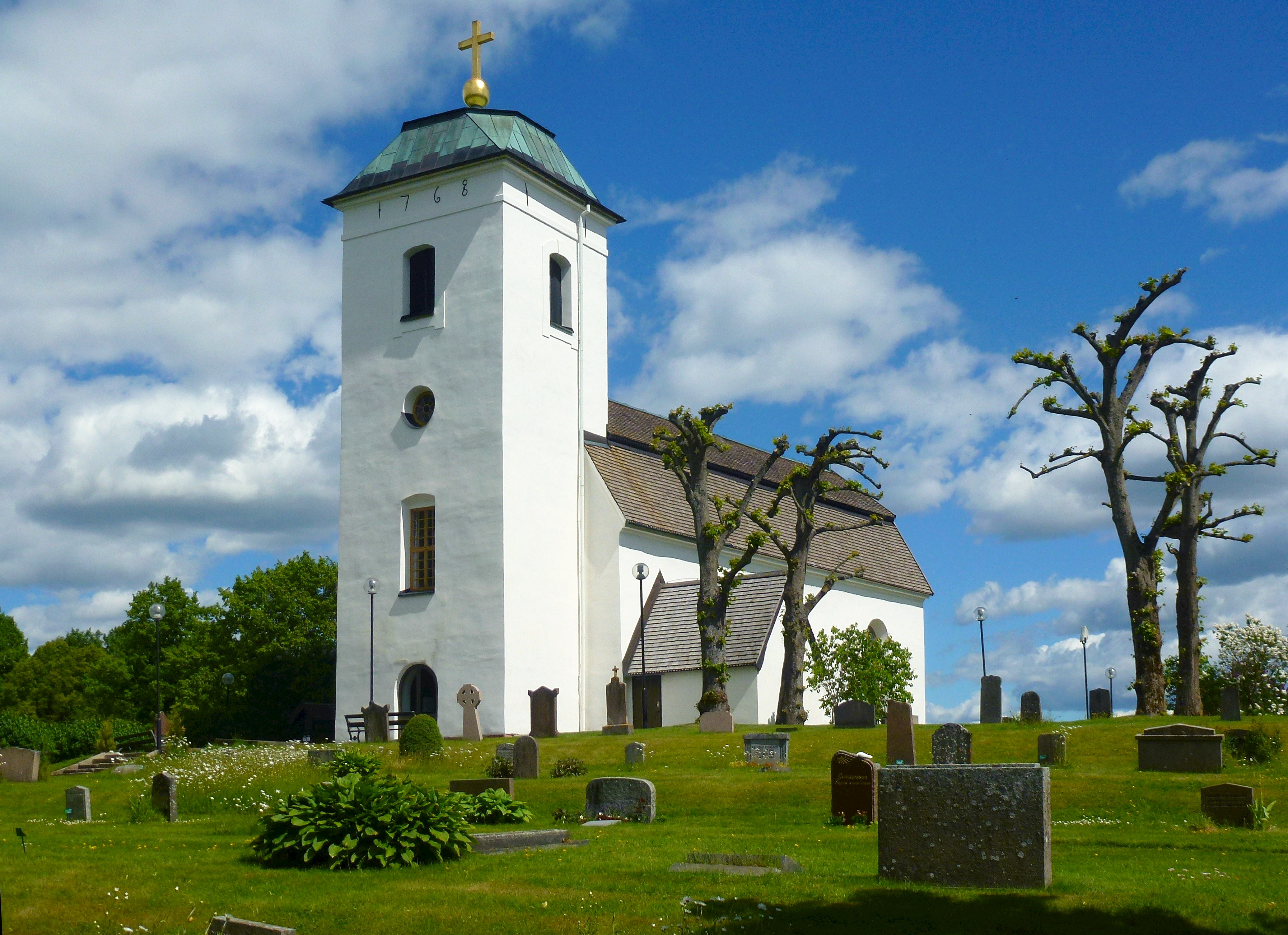Ed Church, Uppland on:
[Wikipedia]
[Google]
[Amazon]
 Ed Church () is a
Ed Church () is a
 Ed Church () is a
Ed Church () is a Lutheran
Lutheranism is a major branch of Protestantism that emerged under the work of Martin Luther, the 16th-century German friar and Protestant Reformers, reformer whose efforts to reform the theology and practices of the Catholic Church launched ...
church about 3 km southwest of the centre of Upplands Väsby
Upplands Väsby () is a locality and the seat of Upplands Väsby Municipality, Stockholm County, Sweden with 48,907 inhabitants in 2020.
History
The municipality has a long history with clear traces of settlements from the pre-Christian time ...
, Stockholm County, Sweden
Sweden, formally the Kingdom of Sweden, is a Nordic countries, Nordic country located on the Scandinavian Peninsula in Northern Europe. It borders Norway to the west and north, and Finland to the east. At , Sweden is the largest Nordic count ...
. It belongs to the Diocese of Stockholm. It is a listed building
In the United Kingdom, a listed building is a structure of particular architectural or historic interest deserving of special protection. Such buildings are placed on one of the four statutory lists maintained by Historic England in England, Hi ...
, protected by law.
History and architecture
Construction of the church started in the 12th century, and it was expanded during the 14th and 15th centuries. In 1487, the interior of the church was decorated withfresco
Fresco ( or frescoes) is a technique of mural painting executed upon freshly laid ("wet") lime plaster. Water is used as the vehicle for the dry-powder pigment to merge with the plaster, and with the setting of the plaster, the painting become ...
s by Albertus Pictor
Albertus Pictor (English, "Albert the Painter"; Immenhusen, c. 1440 – c. 1507), also called Albert Pictor, Albert Målare and Albrekt Pärlstickare (Swedish), is the most famous late medieval Swedish painter, known for his wallpaintings survivi ...
. During Catholic times, the church was dedicated to Saint Olaf
Saint Olaf ( – 29 July 1030), also called Olaf the Holy, Olaf II, Olaf Haraldsson, and Olaf the Stout or "Large", was King of Norway from 1015 to 1028. Son of Harald Grenske, a petty king in Vestfold, Norway, he was posthumously given the ...
.
Reconstruction works were carried out in 1768. The tower was made higher, the windows enlarged and several medieval elements removed. The frescos were covered with whitewash
Whitewash, calcimine, kalsomine, calsomine, asbestis or lime paint is a type of paint made from slaked lime ( calcium hydroxide, Ca(OH)2) or chalk (calcium carbonate, CaCO3), sometimes known as "whiting". Various other additives are sometimes ...
. Architect Jean Eric Rehn
Jean Eric Rehn (18 May 1717, Stockholm - 19 May 1793, Stockholm) was a Swedish architect, engraver and designer.
Biography
His father, Eric, was a government ombudsman for the Sámi people. While still a boy, he became part of the , a forerunn ...
designed parts of the new interior elements, notably the pulpit
A pulpit is a raised stand for preachers in a Christian church. The origin of the word is the Latin ''pulpitum'' (platform or staging). The traditional pulpit is raised well above the surrounding floor for audibility and visibility, accesse ...
. The reconstruction was supported by Charles De Geer
Charles De Geer (30 January 1720 – 7 March 1778) was an entomology, entomologist, industrialist, civil servant and book collecting, book collector. He is sometimes referred to as Charles the Entomologist, to distinguish him from other relati ...
, who also supported reconstruction works at nearby Hammarby and Fresta churches. The external similarities between Fresta and Ed churches are striking.
A renovation was made in 1917-18 by architect Sigurd Curman, who at the time lived in the parish. He uncovered the medieval frescos and commissioned artist Olle Hjortzberg
Gustaf Olof (Olle) Hjortzberg (14 November 1872 – 8 March 1959) was a Swedish painter and illustrator. He is remembered above all for contributing to the revival of wall paintings in Swedish churches.
Biography
Born in Stockholm, Hjortzberg ...
to make additional frescos for the 18th-century vaults. Hjortzberg also designed the new stained glass
Stained glass refers to coloured glass as a material or art and architectural works created from it. Although it is traditionally made in flat panels and used as windows, the creations of modern stained glass artists also include three-dimensio ...
windows.
References
External links
* {{Churches in Uppland Churches in Stockholm County Churches in the Diocese of Stockholm (Church of Sweden) Churches converted from the Roman Catholic Church to the Church of Sweden Upplands Väsby Municipality